Program History
I-35 Capital Express Program
The I-35 Capital Express Program has been in development for many years. Although the current design process incorporates past feedback and analyses, the existing projects did not launch until 2019.
2023:
TxDOT released the Central project DEIS and preferred alternative during a public hearing. The North project broke ground for construction in March.
2022:
TxDOT announced updates to the Central design alternatives and presented modified alternative 3 at a public VOICE meeting. The South and North projects were let in May and September, respectively. The South project broke ground for construction in November.
2021:
TxDOT hosted public hearings for the North and South projects. TxDOT launched a second public and agency scoping meeting for the Central project. Later in the year, TxDOT presented results of the alternatives evaluation and announced further studies of alternative 2 and alternative 3 at a public meeting.
2020:
The Texas Transportation Commission approves $3.4 billion in discretionary funds for the I-35 Capital Express Central project. The Capital Area Metropolitan Planning Organization (CAMPO) also passes a resolution committing $633 million to the Central project. Later in 2020, the project is fully funded for construction at $4.9 billion. TxDOT launches an Environmental Impact Statement for the project, with three preliminary alternatives, all proposing to lower, or lower and tunnel I-35, based on findings from the PEL and stakeholder outreach. Learn more about the Central project.
2019:
The Texas Transportation Commission approves state and federal gas and sales tax dollars, including Texas Clear Lanes funding, for the new I-35 Capital Express North and South projects. Learn more about the North project. Learn more about the South project.
Late 2017:
TxDOT begins operating in a non-tolled environment.
2016-2017:
TxDOT hosts in-person and virtual open houses for the North16, Central7 and South10 projects. These projects collectively propose adding one tolled managed lane in each direction between RM 1431 and SH 45 Southeast as well as other improvements. The current I-35 Capital Express North, Central and South projects take into consideration concepts and feedback from the North16, Central7 and South10 projects.
2015-2016:
The Aesthetics Working Group, composed of nearly 20 agencies and organizations, and with input from a public survey, arrives at a Capital-themed concept for aesthetics on I-35 within the project area. View the I-35 Aesthetics Guidelines.
2015:
Individual projects identified on north and south end of study area are environmentally cleared as part of the Mobility35 Program. Construction begins and additional mainlanes are accommodated as part of the design.
2014–2015:
TxDOT hosts five Decks Neighborhood Workshops for nearby neighborhood residents and The University of Texas. The “decks area” is located between Airport Boulevard and MLK Jr. Boulevard. Participants call for the decks to be removed. In both alternatives under consideration, the decks remain elevated. The Downtown Stakeholder Working Group releases a report with recommendations and supports lowering the mainlanes and managed lanes.
2013-2014:
The Downtown Stakeholder Working Group, composed of public agencies and community stakeholders, is formed. Two alternatives are considered for the project, each proposing to add one tolled lane in each direction. Alternative 1 calls for modifying the existing configuration, while Alternative 2 calls for lowering the mainlanes and managed lanes. The Downtown Stakeholder Working Group analyzes the Reconnect Austin proposal, which recommends burying I-35, building an urban boulevard over the mainlanes and developing the area currently occupied by frontage roads. The proposal is deemed unfeasible. View the Working Group Report.
2013:
The Texas A&M Transportation Institute analyzes redesignating I-35 to SH 130, but this is found to fall short of demand due to the high volume of traffic with origins and destinations along I-35 in the downtown area. TxDOT releases the I-35 Capital Area Improvement Program Corridor Implementation Plan for Travis County, which identifies various improvements for I-35, including additional lane capacity. An updated plan is released in 2014 that includes all three counties in the Mobility35 Program.
2012:
I-35 in Austin is ranked on the most congested roadways in Texas list. TxDOT launches the I-35 Future Transportation Corridor Planning and Environmental Linkages Study (PEL).
2011:
The Texas Legislature passes Rider 42, prioritizing TxDOT funding to study the most congested corridors in the state. The I-35 Corridor Advisory Committee releases the My35 plan. The TxDOT Austin District, in coordination with the City of Austin and other partners, launches the Mobility35 Program, also known as the I-35 Capital Area Improvement Program, which focuses on improvements to I-35 in Travis, Hays and Williamson counties. View the My35 Plan. Learn more about the history of the Mobility35 program.
2010:
The City of Austin commits to funding a $1.5 million feasibility study to explore how operations could be improved on I-35 through downtown.
2008:
The Texas Transportation Commission creates the I-35 Corridor Advisory Committee to increase community participation in the transportation planning process.
Late 1980s-Early 2000s
The TxDOT Austin District undertakes the I-35 Major Investment Study, which proposes improvements along I-35 from Georgetown to Buda. Some plans through Austin include elevated HOV lanes, additional lanes on the upper deck and more travel lanes. The MIS process was completed in 2004. Due to funding and other hurdles to implementation, including community support, none of the major improvements identified in the study is advanced.
History of I-35
1973-74:
The upper decks are constructed from Airport Boulevard to just south of Manor Road. This marks the last major expansion of I-35 in Austin.
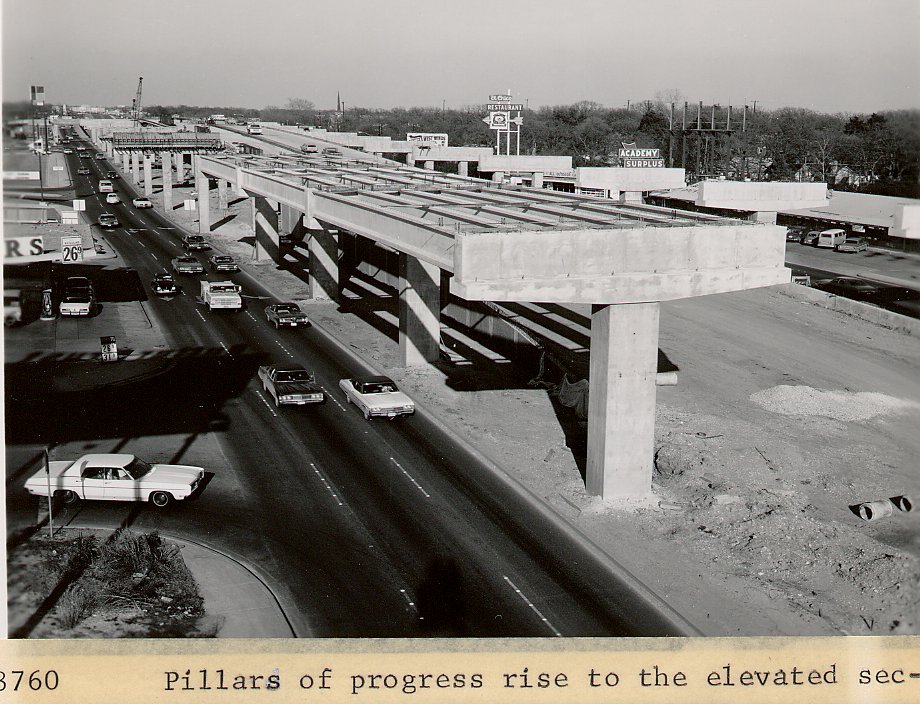
1962:
Interstate Highway 35 officially opens as a controlled-access, 6-lane interstate highway through downtown Austin, aligned on what was formerly known as East Avenue.
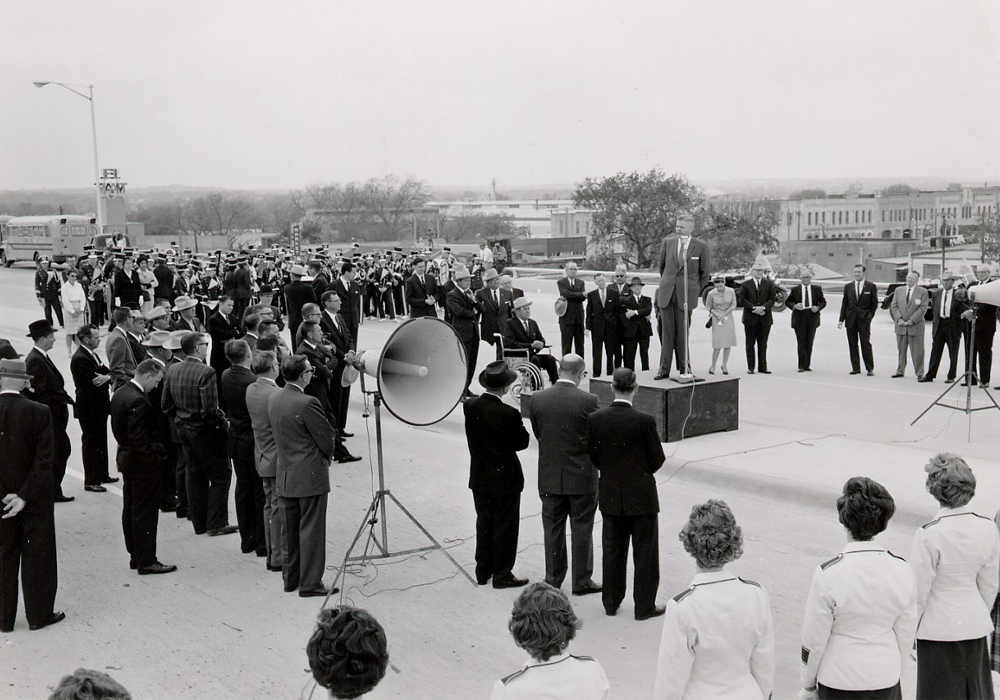
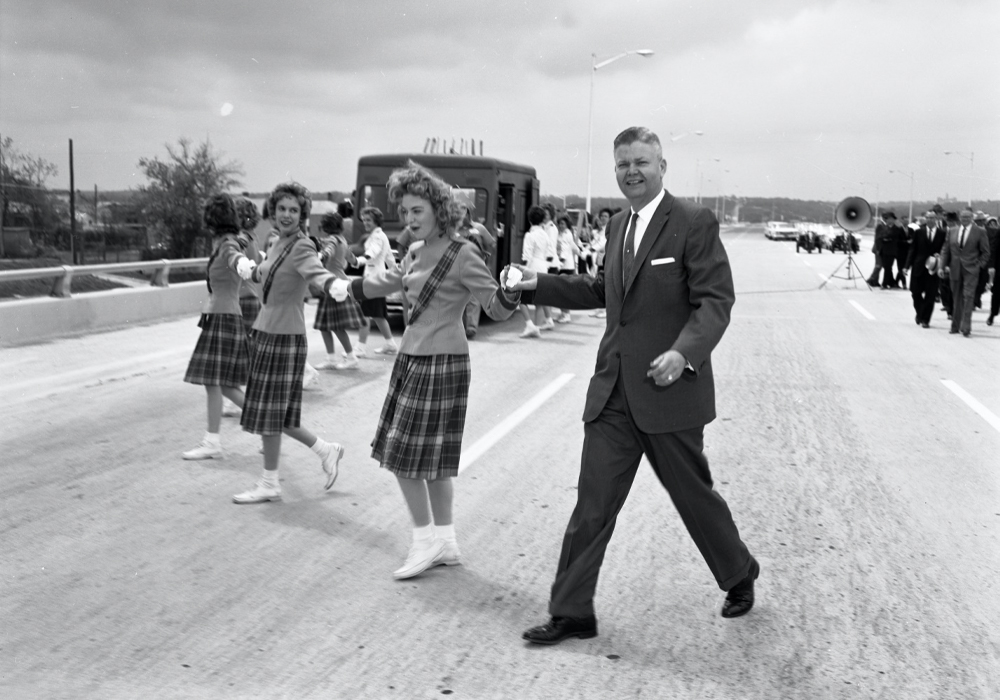
1960:
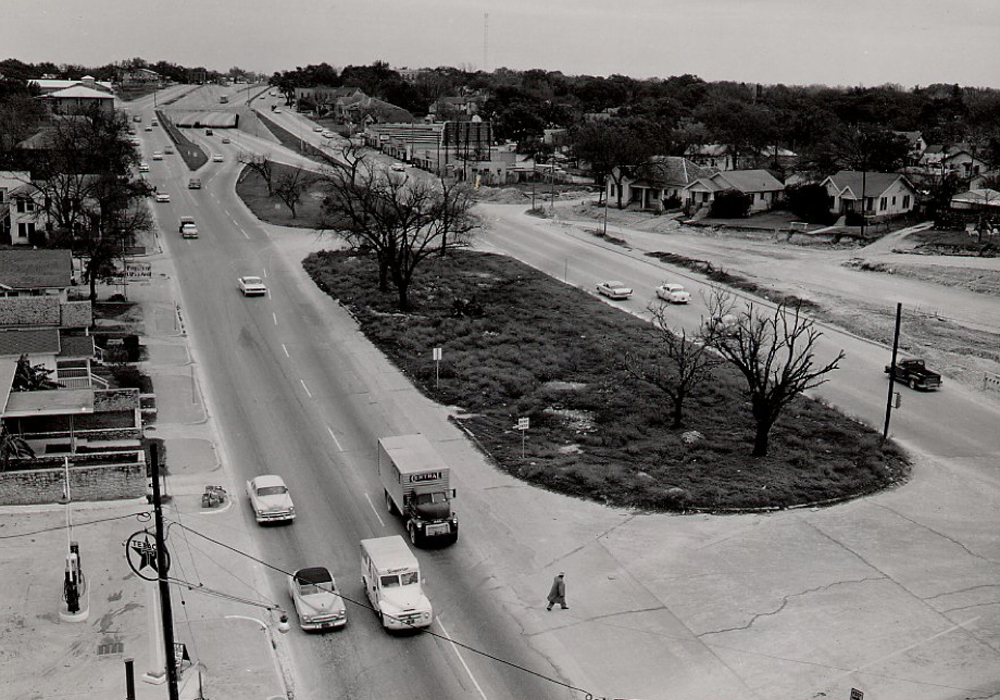
1960:
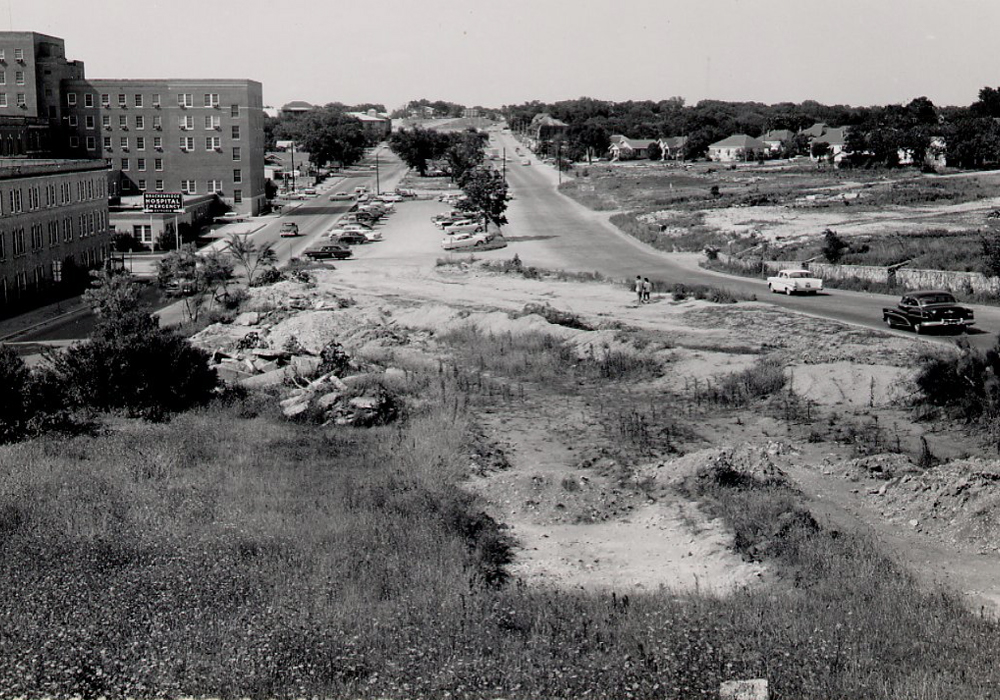
1958:
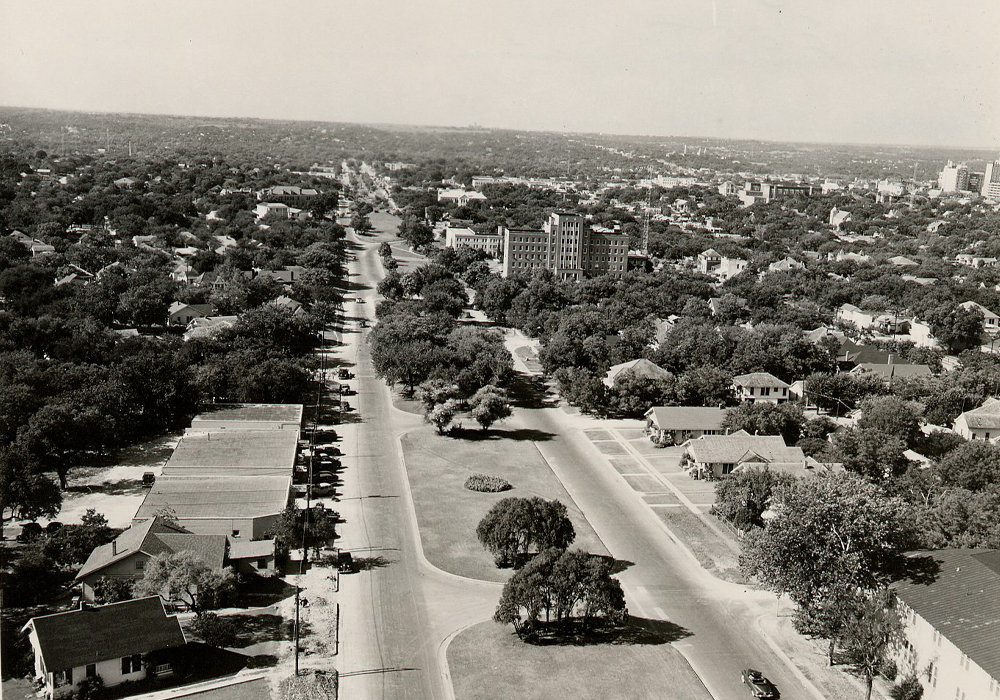
1956:
The Federal-Aid Highway Act of 1956 calls for the development of a 41,000 -mile interstate highway system and authorizes $25 billion to help built it.
1955:
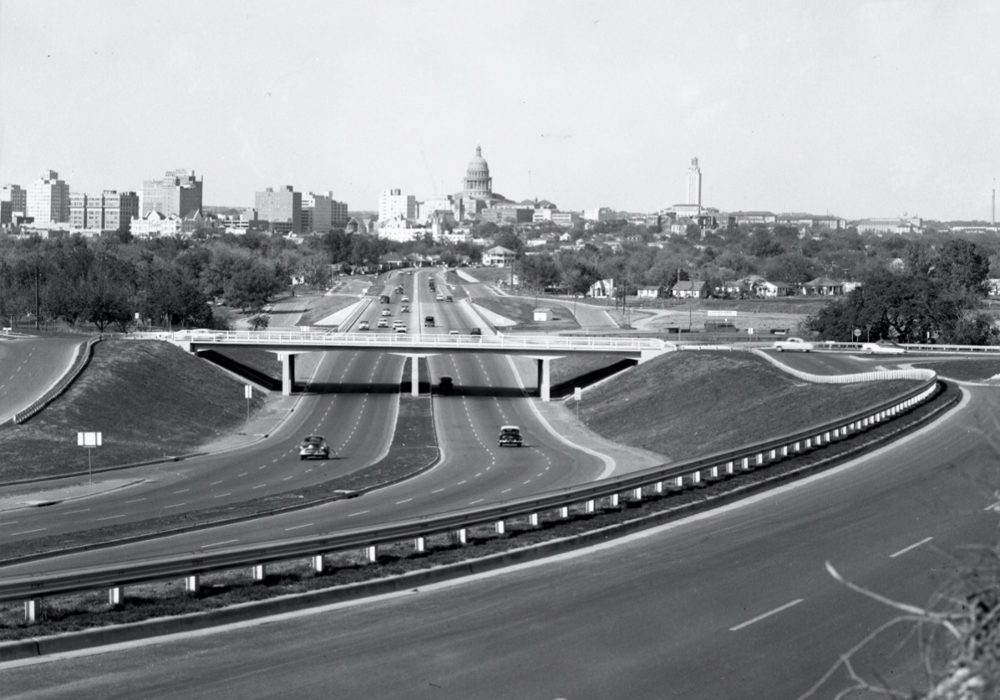
1954:
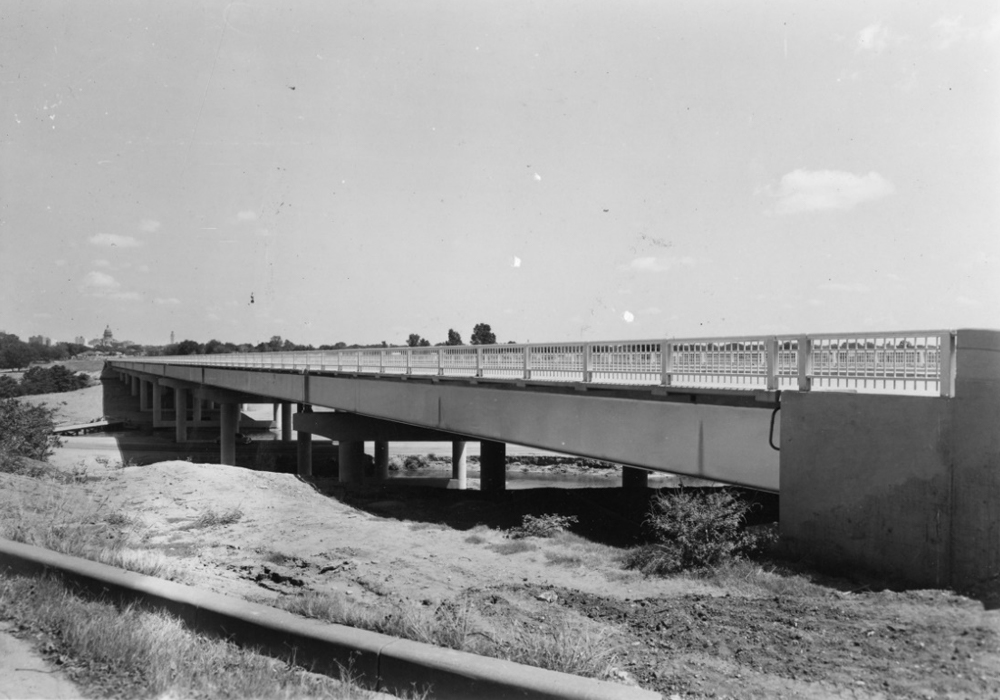
1950:
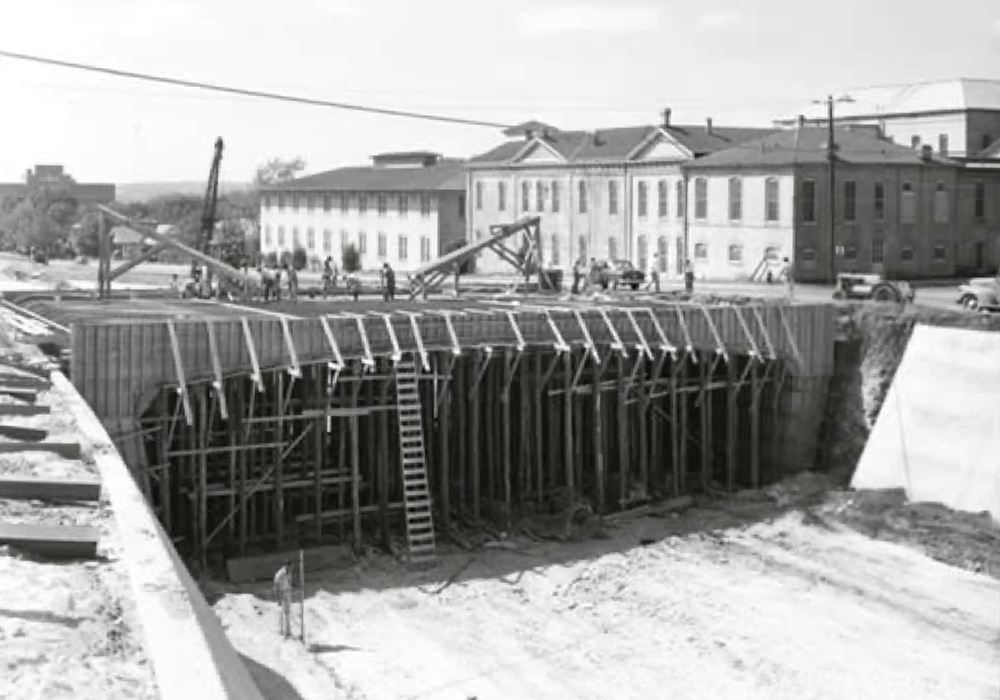
1933:
East Avenue, which later becomes I-35, is paved with landscaped median islands. The roadway was reported to also be referred to as Calle Ancha, or “the wide street,” in Spanish.
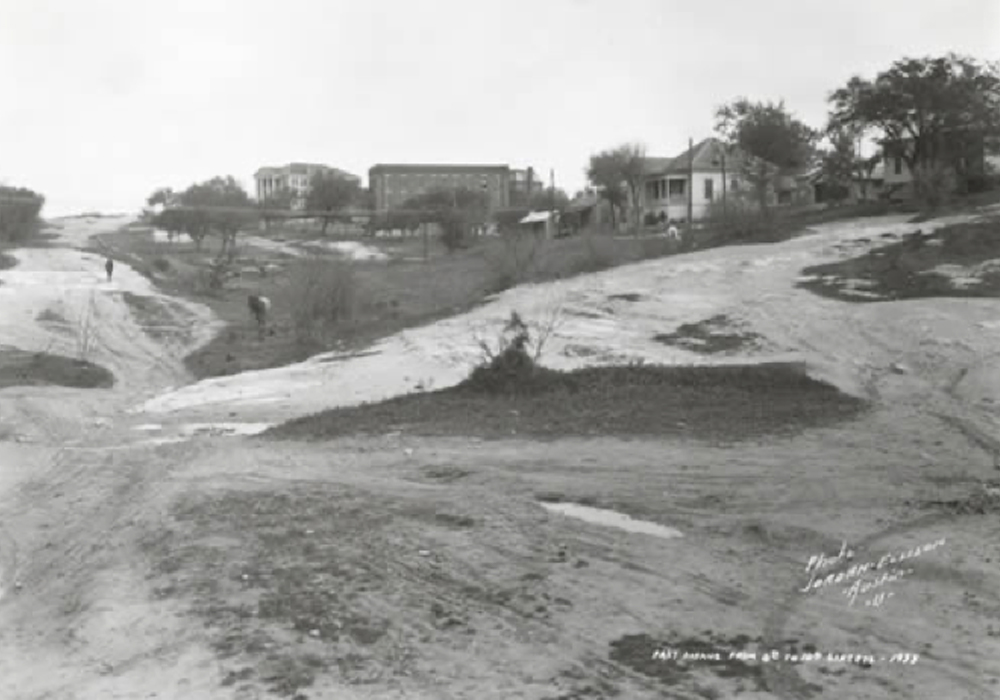
Learn more about more current improvement projects along I-35 at My35Construction.org.


